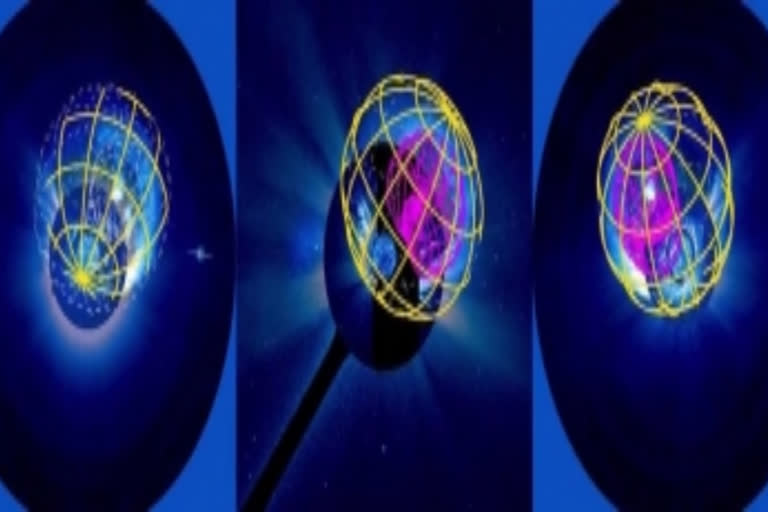New Delhi: Conditions and events in the solar atmosphere like coronal mass ejections (CMEs) influence the accuracy of space weather prediction, which is crucial for the health of satellites, and this understanding will aid the interpretation of data from the upcoming Aditya-L1, India's first solar mission, a study has shown.
Space weather refers to the conditions in the solar wind and near-Earth space, which can adversely affect the performance of space-borne and ground-based technological systems. The space weather near the Earth is mainly due to CMEs, which are frequent explosive expulsions of huge amounts of magnetised plasma from the Sun into its surroundings, which can blow past the Earth, the study published recently has shown.
Example of space weather events is the geomagnetic storm, a perturbation in the Earth's magnetic field, which can last for few hours to few days. Understanding of how events in the solar atmosphere influence space weather is necessary for monitoring and maintaining our satellites.
In the present work, astronomers led by Dr Wageesh Mishra of the Indian Institute of Astrophysics, Bengaluru, an autonomous institute of the Department of Science & Technology, showed that plasma properties and Earth arrival times of CMEs from the Sun can vary substantially with longitudinal locations in the interplanetary space, a Science and Technology Ministry release said.
Also Read: NASA-ESA Sun-watching spacecraft captures first solar eruption
This research is published in the monthly notices of the Royal Astronomy Journal and is co-authored by Kunjal Dave from the C.U. Shah University, Gujarat, Professor Nandita Srivastava from the Physical Research Laboratory, Udaipur, and Professor Luca Teriaca from the Max Planck Institute for the Solar System Research, Germany.
In this research, the team studied the Earth-directed CMEs and interplanetary counterparts of CMEs (ICMEs). With access to publicly available plasma measurements in situ at three locations in the solar system, two of NASA's STEREO spacecraft and the LASCO coronagraph onboard SOHO located near the first Lagrangian point (L1) on the Sun-Earth line they reconstructed a 3D view of the CMEs and ICMEs.
"The two events that are the basis of the present study are the ICMEs of March 11 and August 6, 2011 (which is when they arrived at Earth). Using multi-point remote and in situ observations, the study investigated the differences in the dynamics, arrival time, plasma, and magnetic field parameters of ICME structures at the locations in the heliosphere where the different satellites are located," the release said.
The team said that the Sun emits a continuous stream of charged particles called the solar wind, and the two selected events were ideal for studying the effects of the CME shocks moving through the solar wind.
"We found that plasma characteristics and arrival times of a CME-driven shock, propagating in a pre-conditioned inhomogeneous medium, may be different at different longitudinal locations in the heliosphere," said lead author Mishra.
The study highlights the difficulties in connecting the local observations of an ICME from a single in situ spacecraft to its global structures and explains that accurate prediction of large CME structures at any location in the heliosphere is challenging. It emphasised that lack of information about the pre-conditioned ambient solar wind medium can severely limit the accuracy of CME arrival time and space weather prediction. This new understanding will aid the interpretation of data from space missions, the release added.
Also Read: AI helping researchers improve solar data from the Sun
(IANS)



